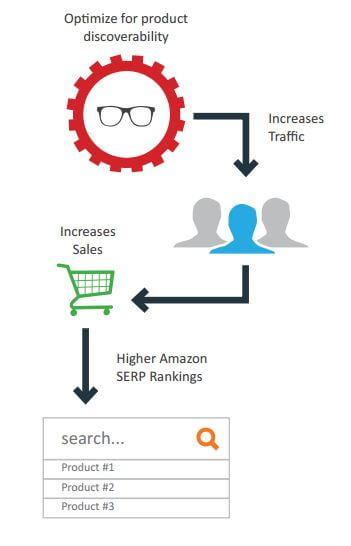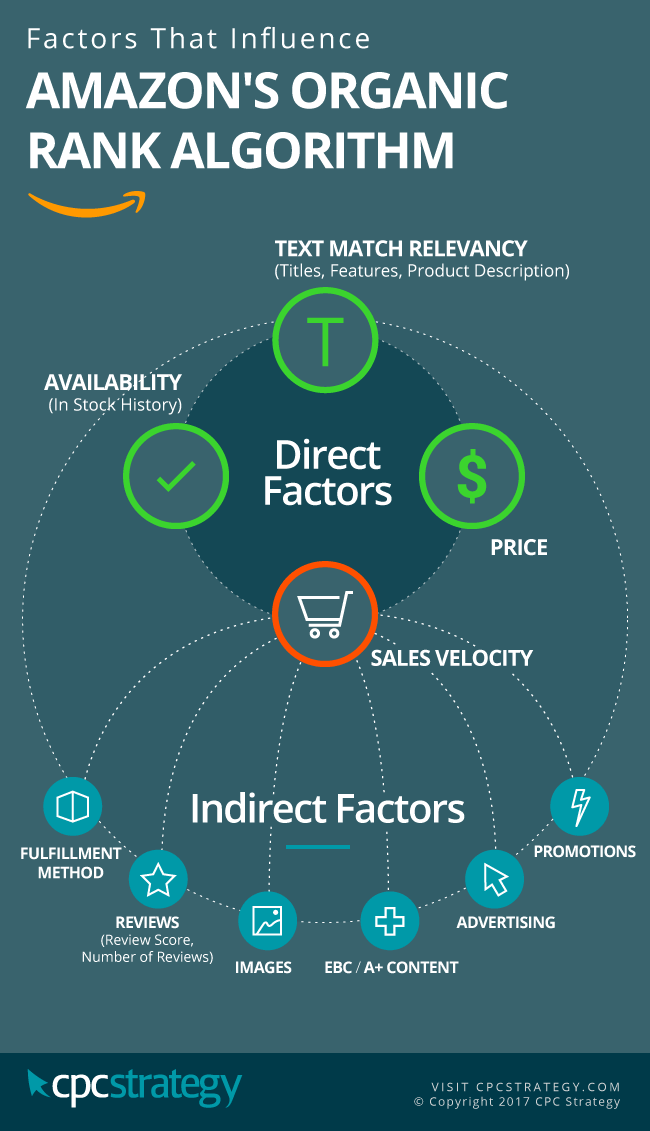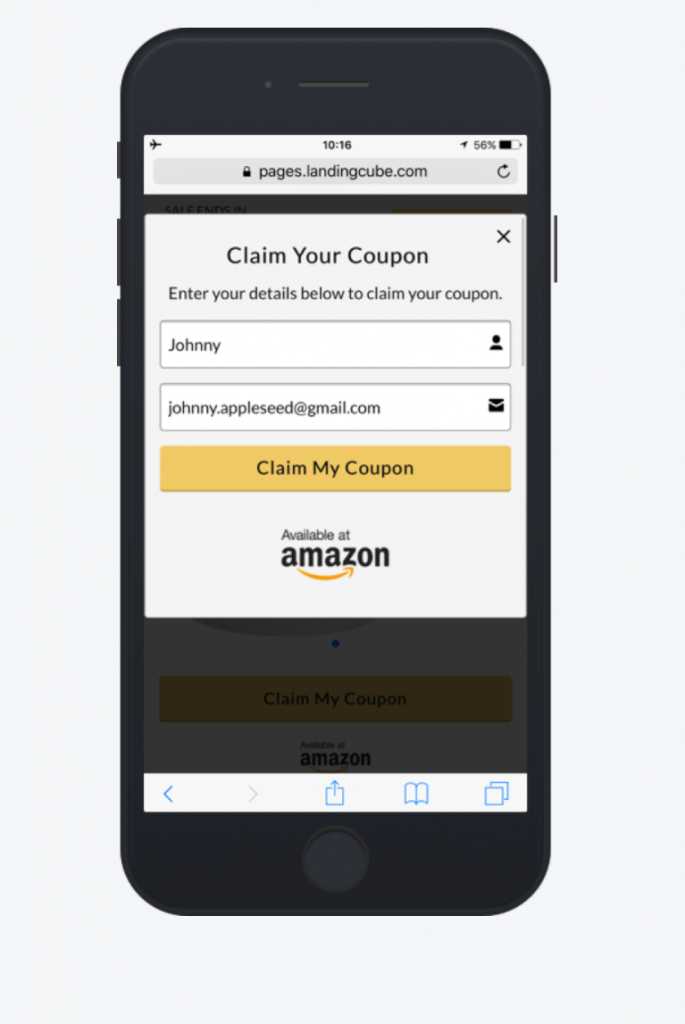This is a guest post by Thomas Pruchinski, Head of Growth and Marketing at LandingCube.
Driving traffic to Amazon is a great way for sellers to gain a competitive advantage and attract new customers. And Amazon appreciates when sellers bring more people to their site!
A well-executed strategy towards driving external traffic to Amazon can boost traffic, drive sales, improve keyword rankings, get you a Best Seller Ranking, and help you develop long term relationships with customers.
However, there’s a right and a wrong way to do this. Here’s what you need to know.
[Psst..we just had a webinar with LandingCube where we discussed this very topic. Sign up to get the recording!]
Increasing Traffic to Amazon Product Listings
There are two broad ways you can increase traffic to your Amazon product listings.
1. On-Amazon Optimizations
The first and most common way is to accomplish everything on Amazon. Here are a few ways you might already be doing this:
- Optimizing Amazon SEO and listing content (doing keyword research, optimizing your backend keywords for relevance & search volume, improving the copy of your title, bullet points & description)
- High quality product photos
- Enhanced Brand Content
- Running ads using Amazon’s in-house advertising platforms (Sponsored Products, Display Ads & Headline Search Ads).

2. Off-Amazon Optimizations
However once seller’s have optimized these aspects of their Amazon listings, the second approach to increasing traffic can come in handy.
And that is driving external traffic (traffic from sources outside of Amazon) to your product listings.
Why To Consider Driving External Traffic to Amazon
Why would you want to drive traffic to Amazon in the first place?
Access to More Potential Customers
By utilizing channels outside of Amazon to drive traffic to your Amazon product listings, you are expanding your pool of potential customers.
Advantage Over Competitors
Selling on Amazon is becoming more and more competitive. By driving external traffic to Amazon, you gain an advantage of competitors. You don’t have to compete with other products on the Amazon Search Engine Results Page; you send traffic straight to your listing.
Amazon May Reward You
Many sellers also believe that Amazon rewards sellers for driving external traffic to Amazon.com, by sending sellers even more traffic. While it hasn’t been proven, it does make sense. When sellers direct outside traffic to Amazon, they help Amazon gain more customers and make more money.
Sources of Traffic
There is no absolute best source of traffic for driving views to Amazon.
It depends on what assets you currently have, what products you’re selling, who your target market is, and what your business goals are.
For example, Facebook Ads can be very effective for some niches, particularly lifestyle products such as beauty or outdoors lifestyle products. However, Facebook Ads can be costly, and they are only becoming more competitive.
Pinterest is a great source on its own. But it caters to certain products, because of its layout and user base. Additionally, it is very visual and primarily used by women. If your products are beautifully designed and mainly catered to women, Pinterest is likely a solid option for external traffic.
There are numerous options for how to drive external traffic. Here are a few:
- Email–If you have an existing email list, sending email blasts
- Organic Social Media–Posting from your business page, posting in relevant groups
- Paid Social Media Ads–Ads on Facebook, Instagram, Youtube, Pinterest, Reddit, etc.
- Search Network Ads–Google AdWords, Bing, Yahoo
- Blog Posts–Works best if you have an existing blog with an active readership
- Affiliate/Influencer Marketing–Partnering with others who have an existing audience to promote your products

How to Test Traffic Sources
A good strategy is to test out one channel that seems promising–say, Facebook Ads.
Try out one campaign and spend a limited amount of money. Start with a specific goal (driving sales, boosting keyword rank, collecting emails, etc.) and track your results. On Facebook, that means you must set up the Facebook Pixel for Facebook Ads.

If your test is successful, double down on that channel. If not, move on to another channel.
But keep in mind just because your test campaign did not produce the results you expected, does not mean the channel doesn’t work for your product.
The problem might not be with the channel itself, but in how you set up your campaign (targeting audience, copy, creative).
For step-by-step instructions to driving traffic to Amazon from various sources, check out this traffic guide.
Two Essential Mindsets for Driving External Amazon Traffic
Regardless of the source of traffic, there are two mindsets you need to adopt before driving off-Amazon traffic to your product listings.
Target Only Relevant Listings
This is perhaps THE most important thing aside from the offer itself.
You want the increase in traffic to be as high quality as possible. That way, visitors will be likely to convert. In order for that to happen, you have to get your audience targeting right.
(Psst…Start here: Improving Your Facebook Content Performance and Audience Targeting)
That way, you’ll save money–especially on Facebook Ads–and may not even have to pay an influencer to push your products to their audience that won’t buy.
Think in Terms of Customer Lifetime Value
Driving traffic to Amazon has more benefits than simply gaining a quick sale on Amazon.com.
If you do it right, you can use this approach to gain long term customers and build a brand.
Using the context of a long term relationship, allows you to extract more value out of customers.
But it also pushes you to provide more value as well, leading us to Customer Lifetime Value. Ask yourself how you can serve your customers better, and you’ll be on the right track.
The Danger Of Driving Traffic Straight To Product Listings
One of the biggest mistakes Amazon sellers make when driving traffic to Amazon is driving traffic straight to their listings.
This is a big mistake for two reasons:
1. Going straight for the sale may sacrifice your long-term relationship with the customer
2. Off-Amazon traffic is less likely to convert internal Amazon traffic
When you send traffic straight to your Amazon listings, you may notice your traffic increases, but conversion rates tend to drop. Unfortunately, any ranking spike from the increase in traffic is lowered by the decrease in conversion rate.
Most experienced Amazon sellers agree that conversion rates are an important factor in Amazon’s ranking algorithm, and Amazon sees your listing is not getting many sales for the number of page views, they will send fewer people to your listing.

How can you drive traffic to Amazon, ensure high conversion rates & build long-term relationships with customers? By driving traffic to landing pages first.
How to Use Landing Pages to Drive External Traffic to Amazon Listings
The right landing page tool can help you filter traffic down to the most convert-able audience and optimize for customer lifetime value.
The landing page also shifts the focus from getting a quick sale to collecting an email. Having collected an email, you can now market to the this customer in the future, which is a much more valuable asset over time.
Amazon sellers can do a lot of with email lists:
- Promote Product Launches–Email your list with exclusive discounts to get your new products off the ground
- Send an Email Newsletter–Email your list regularly to maintain a long term relationship and add additional value
- Drive Additional Sales– Boost rankings for an existing product by emailing your list
- Retarget Your Audience on Other Channels–Use the emails to build targeting audiences on Facebook
- Build Your Ecommerce Brand Off Amazon–Drive sales on your own ecommerce site. When you collect an email before the sale is made on Amazon, you can do this without breaking Amazon’s Terms of Service.
Building email lists gives sellers another layer of defense against the hyper competitiveness of Amazon’s marketplace.
Even better, when you use this sales funnel strategy you get to take full advantage of Amazon’s solid reputation among consumers to drive initial sales and email signups.
How to Build the Right Landing Pages
There are two general options for creating landing pages to drive external traffic to Amazon listings.
1. General Purpose Landing Page Tool
This category includes general purpose landing page tools such as LeadPages or even MailChimp’s landing page tool.
This option is best for giving away free content, like an e-book. For instance, if you sell blenders, you can make an e-book full of recipes to help customers get more value out of the blender.

2. Amazon Promotional Landing Pages
The other option is an Amazon landing page generator such as LandingCube.
Currently, it is required to provide single-use discount codes for the email opt-in. With this option, you’ll give away single-use discount codes in exchange for email signups.
The discount code gives customers a great incentive to give away their email, and it also boosts sales, conversion rate, and thus Amazon rankings (so Amazon will send more customers to your product in the future).
Using a landing page tool, you are essentially building a sales funnel for Amazon. The funnel looks something like this:

Instead of driving traffic straight to the listing, you use a landing page as an intermediary. This doesn’t just boost traffic to Amazon and increase your sales, it could also do the following:
Increase conversion rates–The landing page essentially serves as a filter. Those who are less likely to buy don’t put in their emails and never reach your Amazon listing. Those who value your offering reach your Amazon listing and are more likely to buy.
Increases Amazon rankings–With a spike in sales & conversions, your Amazon rankings increase. So in the future, more customers reach your product listing through Amazon’s organic search. Amazon, as it turns out, rewards sellers who drive traffic to their site. Essentially, you are doing the work for them in getting new customers.
Build a brand & long term relationships–The landing page opt-in feature helps you collect emails. Having an email list of past customers is a powerful asset. You can market to these people for repeat purchases, upsells, cross-sells, etc. You can build a more differentiated brand. And defend your business from Amazon- If you get suspended, or if Amazon decides to manufacture its own products in your niche, having an email list can allow you to compete on your own.
In Summary
No matter the source of traffic you use, driving eyes to Amazon will help sellers gain an edge over the competition and build a brand.
Driving external traffic to Amazon is a powerful strategy to boost sales, improve rankings and gain more customers, and Amazon may reward you for sending traffic their way.
Beyond this, if you use landing pages, you can collect emails to increase conversion rates and optimize your Customer Lifetime Value.
It’s good for you, it’s good for customers, and it’s good for Amazon. (That’s what we call a winning strategy.)
You Might Be Interested In












